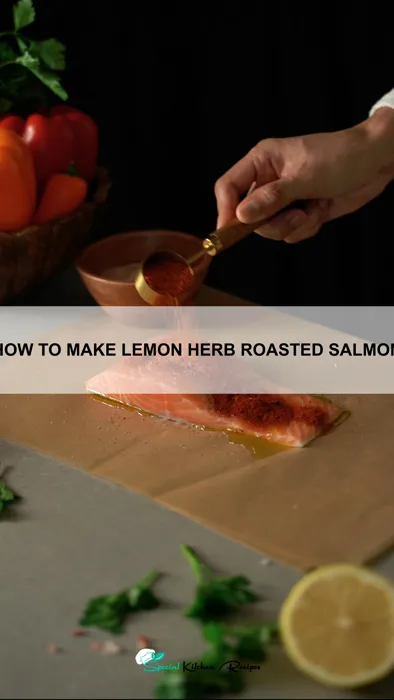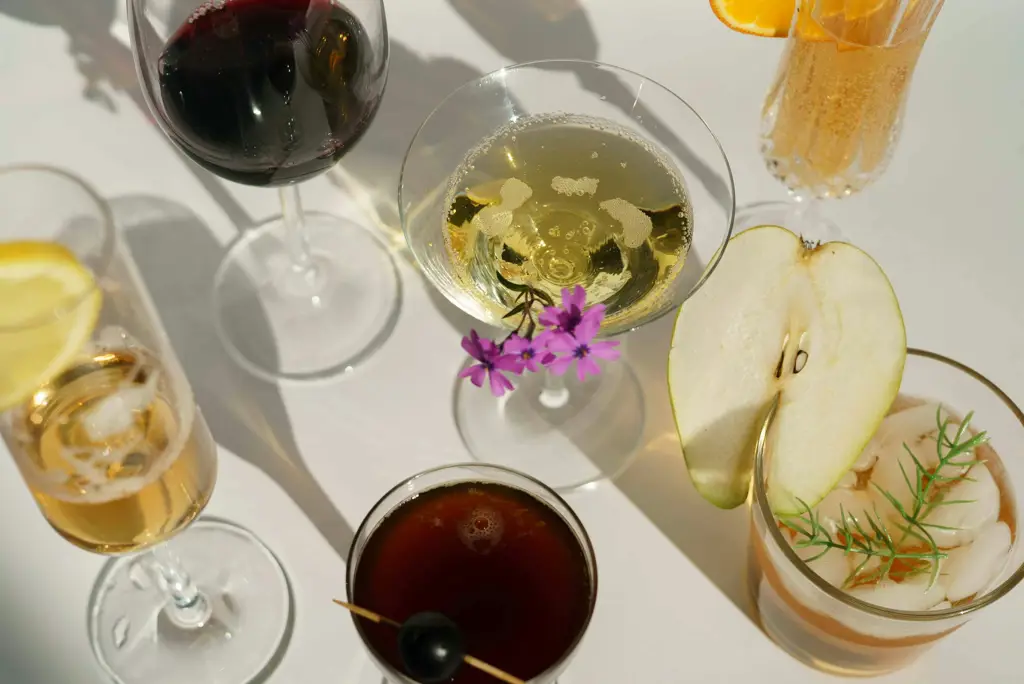Salmon, a culinary star gracing tables worldwide for millennia, boasts a rich history intertwined with human civilization. Archaeological evidence suggests salmon consumption dates back to the Paleolithic era, with indigenous communities in the Pacific Northwest and Northern Europe relying heavily on this nutrient-rich fish for sustenance. The precise origins of lemon-herb roasted salmon are difficult to pinpoint, as the combination of these flavors represents a relatively modern culinary evolution, likely emerging from Mediterranean and European cooking traditions where herbs and citrus fruits are prominent. However, the individual components—the roasting of salmon and the use of herbs and lemon—have ancient roots. The practice of preserving and cooking fish through roasting, for example, is a technique that has been employed by countless cultures throughout history.
The cultural significance of salmon varies widely. For many indigenous peoples, particularly those living near salmon-rich rivers, salmon represents a vital spiritual and cultural symbol, often linked to abundance, prosperity, and life itself. In some cultures, salmon plays a central role in ceremonies and traditional storytelling. Beyond its cultural value, salmon is a nutritional powerhouse. It’s a remarkably rich source of omega-3 fatty acids, protein, and Vitamin D, contributing to its enduring popularity. In fact, according to the National Oceanic and Atmospheric Administration (NOAA), approximately 1.4 billion pounds of salmon were harvested in the United States in 2020 alone, highlighting its significant role in the global seafood market.
Today, lemon-herb roasted salmon stands as a popular dish across various cuisines, showcasing the adaptability and versatility of this remarkable fish. The bright, zesty notes of lemon perfectly complement the richness of the salmon, while the aromatic herbs add layers of complexity and depth of flavor. This recipe, while seemingly simple, encapsulates a culinary journey spanning millennia, from ancient fishing practices to modern culinary innovation. It combines traditional cooking techniques with readily available ingredients to create a delicious and healthy meal that’s both satisfying and elegant. The following recipe will guide you through creating this delightful dish, allowing you to appreciate the history and culinary artistry embedded within each bite.
Ingredients and Measurements
This recipe yields approximately 4 servings of delicious lemon herb roasted salmon. The quantities listed are easily adjustable to accommodate more or fewer guests. Remember to always adjust oven temperature and cooking time accordingly when altering the serving size.
For the Salmon:
- 1.5 lbs Salmon fillet, skin on or off (your preference): Choose a high-quality salmon fillet, ideally wild-caught for optimal flavor. A thicker fillet will require slightly longer cooking time. Ensure the fillet is evenly sized to ensure even cooking. If using a skin-on fillet, score the skin in a crosshatch pattern to prevent curling during cooking.
- 1 large Lemon: One lemon provides ample zest and juice for flavor. Use a microplane zester for the finest lemon zest, maximizing the aromatic oils. Reserve a few lemon wedges for garnish.
- 2 tablespoons Olive Oil: A good quality extra virgin olive oil will add richness and flavor to the salmon. Avoid using overly strong flavored oils that might overpower the delicate salmon taste.
- 2 cloves Garlic, minced: Freshly minced garlic provides the best flavor. You can also use 1 teaspoon of pre-minced garlic from a jar if pressed for time, but fresh is always preferred.
- 1 tablespoon Fresh Herbs (mixed): We recommend a combination of fresh herbs such as dill, thyme, and parsley. Approximately 1 tablespoon of each chopped finely works well, but feel free to experiment with your favorite herb combinations. Dried herbs can be substituted, but use about 1/3 the quantity.
- 1/2 teaspoon Salt: Use kosher salt or sea salt for the best flavor. Adjust to taste depending on the saltiness of your salmon and other ingredients.
- 1/4 teaspoon Black Pepper: Freshly ground black pepper adds a nice kick. Again, adjust to your preference.
For Serving (Optional):
- Lemon wedges
- Fresh herbs (dill, parsley)
- Roasted vegetables (asparagus, broccoli)
Note: All measurements are approximate. Feel free to adjust to your personal taste and preferences. Weighing your salmon will help ensure consistent results, especially if you’re making this recipe multiple times.
Equipment List
To successfully prepare this delicious Lemon Herb Roasted Salmon recipe, you’ll need a few key pieces of equipment. Having the right tools will not only make the cooking process easier and more efficient but will also contribute to achieving perfectly cooked, flavorful salmon.
Baking Sheet: You’ll need a standard size baking sheet, approximately 12 x 18 inches. A non-stick baking sheet is highly recommended to prevent sticking and make cleanup a breeze. If you don’t have a non-stick sheet, consider lining it with parchment paper for easy removal and cleaning. Avoid using a dark-colored baking sheet as it can lead to uneven browning and potentially overcooked salmon.
Baking Rack: While optional, using a baking rack placed on top of your baking sheet elevates the salmon, allowing for even heat circulation and crispier skin. A standard wire baking rack, approximately 11 x 17 inches, will work perfectly. Ensure the rack fits comfortably within your baking sheet.
Measuring Cups and Spoons: Accurate measurements are crucial for achieving optimal flavor balance. Having a set of both measuring cups (liquid and dry) and measuring spoons will ensure you add the correct amounts of herbs, lemon juice, and olive oil. Invest in a good quality set for precision.
Small Bowl: A small bowl, approximately 6-8 inches in diameter, is necessary for mixing the lemon herb mixture. This allows you to easily combine the ingredients before applying them to the salmon.
Sharp Knife: A sharp knife is essential for preparing the salmon fillets. A fillet knife, with its thin and flexible blade, is ideal for maneuvering around the delicate salmon flesh without tearing it. A dull knife will be difficult to use and may result in uneven cuts.
Citrus Juicer (Optional): While you can manually juice the lemon, a citrus juicer will make this task much faster and more efficient, ensuring you extract the maximum amount of juice.
Basting Brush (Optional): A basting brush can be helpful for evenly distributing the lemon herb mixture over the salmon fillets, ensuring consistent flavor throughout. However, using a spoon or your hands works equally well.
Oven Thermometer (Recommended): For optimal results, an oven thermometer is highly recommended. Ovens can sometimes vary in temperature, so an oven thermometer ensures your oven is actually at the temperature you’ve set. This is crucial for achieving perfectly cooked salmon.
Preparation of Salmon Fillet
Before you begin roasting your salmon, proper preparation is key to achieving a perfectly cooked and flavorful result. Start with approximately 1.5 pounds of skin-on salmon fillets, ensuring they are of even thickness. If your fillets are uneven, trim any excessively thick portions to maintain consistent cooking time. Aim for a thickness of about 1 inch for optimal results.
Pat the salmon fillets completely dry using paper towels. Excess moisture will prevent the skin from crisping properly and can lead to steaming instead of roasting. Take your time with this step; it’s crucial for achieving that desirable crispy skin.
Next, score the skin of the salmon fillets. This doesn’t need to be elaborate; simply make 3-4 shallow diagonal cuts across the skin of each fillet. This helps the skin render its fat more effectively and prevents it from curling during cooking.
Now, it’s time to season. For a 1.5-pound salmon fillet, you’ll need approximately 1 teaspoon of kosher salt and ½ teaspoon of freshly ground black pepper. Generously season both sides of the salmon fillets, ensuring the salt and pepper are evenly distributed. Don’t be shy with the seasoning; the salmon will absorb it beautifully.
For added flavor, consider adding other seasonings at this stage. A drizzle of 1 tablespoon of olive oil on each fillet will help the seasonings adhere and contribute to a richer flavor. You can also add other herbs and spices here, such as 1 teaspoon of dried dill or ½ teaspoon of garlic powder, depending on your preference. Remember to gently rub the seasonings into the flesh of the salmon for even distribution.
Optional: For an extra layer of flavor, you can create a simple herb paste by finely mincing fresh herbs like parsley, dill, and chives. Mix them with a little olive oil and spread thinly over the salmon fillets before seasoning. This adds a burst of freshness and vibrant color to the finished dish.
Once seasoned, gently place the prepared salmon fillets on a baking sheet lined with parchment paper. This will prevent the salmon from sticking and make cleanup easier. Now you’re ready to proceed with the roasting process.
Preparation of Herb and Lemon Mixture
The success of this Lemon Herb Roasted Salmon recipe hinges significantly on the vibrant and aromatic herb and lemon mixture. Taking the time to properly prepare this component will elevate the dish from good to exceptional. We’ll be using fresh herbs for the best flavor and aroma, but dried herbs can be substituted in a pinch (use approximately 1/3 the amount).
Begin by gathering your ingredients: 2 tablespoons of fresh lemon zest (from about 1 large lemon), 2 tablespoons of fresh lemon juice (also from about 1 large lemon), 2 tablespoons of finely chopped fresh parsley, 1 tablespoon of finely chopped fresh dill, 1 tablespoon of finely chopped fresh thyme, 1 clove of garlic, minced, and 2 teaspoons of olive oil. Adjust quantities based on your personal preference and the size of your salmon fillet(s). For a larger fillet, you might consider increasing the quantities proportionally.
The key to a well-balanced herb mixture is ensuring even chopping of the herbs. Roughly chopped herbs can result in uneven distribution of flavor and an unappealing texture. Use a sharp knife and chop the herbs as finely as possible. This will allow the herbs to better coat the salmon and infuse their flavors thoroughly during the roasting process. Aim for a consistency that’s finely textured but not pasty.
In a small bowl, combine the lemon zest and lemon juice. This step helps to release the essential oils from the lemon, enhancing the aroma and flavor of your mixture. Then, add the minced garlic, followed by the chopped parsley, dill, and thyme. Gently stir to incorporate all the ingredients. Avoid over-mixing, as this can bruise the herbs and diminish their vibrant color.
Finally, drizzle in the olive oil. The olive oil helps to bind the mixture and also adds a layer of richness and moisture to the salmon. Stir gently until everything is evenly combined. Taste the mixture to ensure the balance of lemon and herbs is to your liking. You can adjust the lemon juice or herbs accordingly. Once you’re satisfied with the flavor, your herb and lemon mixture is ready to be used to coat your salmon.
Professional Tip: For an even more intense lemon flavor, consider adding a pinch of lemon pepper to the mixture. This will add a subtle heat and enhance the overall taste profile. Remember to taste and adjust seasonings as needed to suit your palate.
Roasting the Salmon
Preheat your oven to 400°F (200°C). This temperature ensures the salmon cooks through evenly without drying out. Using a preheated oven is crucial for consistent results.
While the oven heats, prepare your baking dish. A small, oven-safe baking dish, approximately 8×8 inches, is ideal for a 1-1.5 lb salmon fillet. Line the dish with parchment paper for easy cleanup and to prevent sticking. Parchment paper is a lifesaver when it comes to cleaning up after cooking fish.
Place the salmon fillet in the prepared baking dish. If using a whole salmon fillet, ensure it’s skin-side down. This helps to create a crispy skin and prevents the fillet from sticking. If using individual salmon portions, arrange them skin-side down in a single layer. Skin-side down is key for crispy skin and even cooking.
Generously drizzle the salmon with 2 tablespoons of olive oil. This helps to keep the salmon moist and adds flavour. Use a high-quality olive oil for the best results. Don’t be shy with the olive oil; it’s essential for flavour and moisture.
Next, sprinkle the salmon evenly with your prepared lemon herb mixture (recipe should be detailed in a previous section). Ensure the herbs and lemon zest are distributed across the entire surface of the salmon. About 2 tablespoons of the mixture should suffice, but adjust to your preference. Even distribution of the herb mixture ensures consistent flavour throughout.
Season the salmon with salt and freshly ground black pepper. Start with ½ teaspoon of salt and ¼ teaspoon of pepper, adjusting to your taste. Freshly ground black pepper adds a much more intense flavour than pre-ground.
Roast the salmon in the preheated oven for 12-15 minutes, or until the salmon is cooked through and flakes easily with a fork. Cooking time will vary depending on the thickness of the fillet. Overcooking can result in dry salmon, so it’s best to check for doneness a couple of minutes before the maximum time. A meat thermometer inserted into the thickest part of the fillet should register 145°F (63°C).
Once cooked, remove the salmon from the oven and let it rest for 2-3 minutes before serving. This allows the juices to redistribute, resulting in a more tender and flavorful salmon. Allowing the salmon to rest is crucial for a juicy and flavorful final product.
Checking for Doneness
Determining the perfect doneness for your lemon herb roasted salmon is crucial to achieving a succulent and flaky result. Overcooked salmon will be dry and tough, while undercooked salmon presents a food safety risk. Therefore, accurate checking is paramount.
The most reliable method is using a food thermometer. Aim for an internal temperature of 145°F (63°C). Insert the thermometer into the thickest part of the salmon fillet, ensuring it doesn’t touch the bone. Avoid piercing the skin, as this can release juices and lead to slightly drier salmon.
While a thermometer provides the most accurate reading, visual cues can also help you gauge doneness. The salmon should be opaque throughout, with no translucent areas remaining. The flesh should flake easily with a fork. Gently press down on the thickest part of the fillet; if it feels firm but not hard, it’s likely cooked through.
Another helpful indicator is the color. Raw salmon has a translucent, almost glassy appearance. As it cooks, the color will change to an opaque, pearly white or light pink, depending on the type of salmon. However, relying solely on color is not recommended, as the intensity of the color can vary depending on the type of salmon and cooking method.
For a 6-ounce salmon fillet, roasting time typically ranges from 12-15 minutes at 400°F (200°C). However, this can vary depending on the thickness of the fillet and your oven’s temperature consistency. Always start checking for doneness around the 12-minute mark, using both the thermometer and visual cues. It’s better to slightly undercook than overcook the salmon.
If the salmon is not yet cooked through at the 12-minute mark, continue cooking in 1-2 minute intervals, checking with the thermometer after each interval. Once it reaches the desired internal temperature of 145°F (63°C), remove it from the oven immediately. Allow the salmon to rest for 3-5 minutes before serving. This allows the juices to redistribute, resulting in a more tender and flavorful final product. Enjoy your perfectly cooked lemon herb roasted salmon!
Recommendations for Lemon Herb Roasted Salmon
For optimal flavor and texture, we recommend using fresh, high-quality salmon fillets. Ensure the fillets are patted dry before seasoning to promote even browning and crisping. Don’t overcrowd the baking sheet; allow space between fillets for even roasting. Overcrowding can lead to steaming instead of roasting, resulting in a less crispy and flavorful salmon.
Serving suggestions are plentiful! This Lemon Herb Roasted Salmon is incredibly versatile. It pairs beautifully with a simple side salad featuring mixed greens, cherry tomatoes, and a light vinaigrette. Roasted asparagus or green beans also complement the salmon’s bright, lemony flavor. For a heartier meal, consider serving it with quinoa or couscous. A creamy dill sauce or a lemon-butter pan sauce enhances the dish further.
Leftover salmon can be stored in an airtight container in the refrigerator for up to 3 days. Reheat gently in the microwave or oven to avoid overcooking. Avoid freezing the salmon as it can affect the texture upon thawing.
Nutritional Information (per serving, approximate): Calories: 250-300 (depending on salmon size and added ingredients), Protein: 25-30g, Fat: 15-20g (mostly healthy omega-3 fatty acids), Carbohydrates: 2-5g, Fiber: 1-2g. Note: Nutritional information is an estimate and may vary based on specific ingredients and portion sizes.
To elevate your culinary experience, consider experimenting with different herbs. Fresh dill, thyme, or rosemary can be substituted or added alongside parsley. For a spicier kick, add a pinch of red pepper flakes to the herb mixture. Remember to adjust cooking time depending on the thickness of your salmon fillets; using a meat thermometer to ensure the internal temperature reaches 145°F (63°C) is highly recommended for food safety.
Enjoy your delicious and healthy Lemon Herb Roasted Salmon! We hope you find these recommendations helpful in creating a memorable meal.





